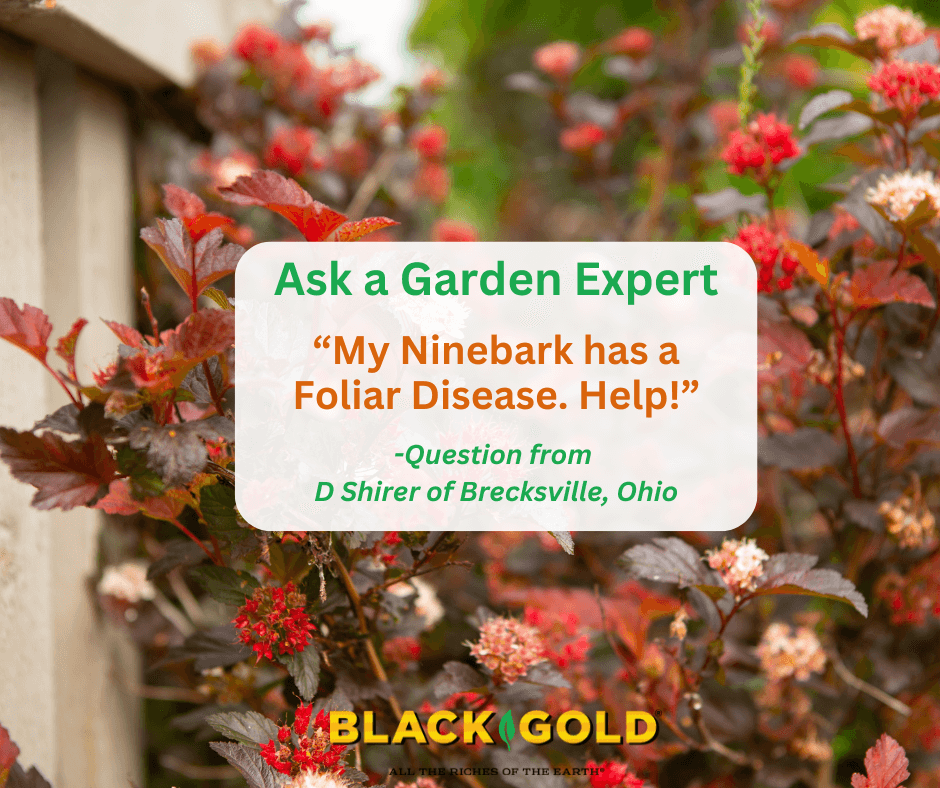
“I grow several varieties of ninebark, including the straight species native, and have not had any trouble the past 30 years. Last year for the first time some of the branches began to show what looked like powdery mildew, then shriveled and eventually turned black. This was very disfiguring on these wonderful shrubs and happened on all varieties. I cut them back severely over the winter and hoped it was last year’s summer weather (hot and dry) that brought on the disease. I showed leaves to a garden center, but they weren’t familiar. It’s just started back up on my shrub (been cool and wet). Do you know what it is and how to treat it? Thanks so much.” Question from D Shirer of Brecksville, Ohio
Answer: Ninebark is known to get powdery mildew, fireblight, and leaf spots, but none of the diseases are typically fatal to the shrubs. Based on my knowledge and research, it sounds like ninebark powdery mildew, and/or other mildew species, are the likely causes of your ninebark troubles. Mildew infections can appear earlier in the season, though they do tend to be most problematic in warmer, drier weather of summer, as you have observed.
Physocarpus and Powdery Mildew
According to an Amerinursery article titled Physocarpus and Powdery Mildew, three powdery mildew species can be responsible. In the article, the author writes, “The susceptibility of eastern ninebark to the specific ninebark powdery mildew (Podosphaera aphanis var. physocarpi) and generalist powdery mildews (Phyllactinia guttata and Podosphaera macularis) has been well-established.” He further writes, “Ninebark plants infected by powdery mildew commonly develop superficial patches of white fungal colonies on plant parts. In addition, the ninebark-specific fungus may produce bizarre witches’ brooms of thickened stem tissue with stunted foliage discolored white or light pink. These brooms turn black and further detract from the plant’s appearance by persisting through winter and beyond.” Do the symptoms and signs sound familiar? There are several steps you can take to stop mildew and other fungal diseases on your shrubs.
Steps to Controlling Powdery Mildew
- Use safe fungicides. Liquid copper is relatively safe and works. Greencure is another solid product with a good history of controlling mildew on garden plants, and it is safe to use. Apply both as directed.
- Apply horticultural oils. Hort oil can help control mildew and potential pests. The oils work by trapping and killing fungal spores. Applications can start in spring before plants leaf out and beyond. (Click here for some product options.)
- Grow resistant varieties. Your plants are 30 years old, and you will surely want to keep them, but if you plant new ones then grow mildew-resistant varieties. The three recommended for mildew resistance are the compact green-leaved ‘Nanus’, the yellow-leaved ‘Luteus’, and the exceptional purple-leaved Summer Wine® from Proven Winners. (Click here for a good article about planting and siting trees and shrubs.)
- Clean all fallen leaf litter at the end of the season and prune off badly-infected branches. You were right to remove infected branches. The disease also remains on leaf litter and infected, so raking and bagging diseased material removes the severity of future outbreaks. Click here for more information about the disease and its control from The University of Illinois.
I hope the information helps. Let me know if you have any other questions. If you would like to send photos. Please click here to learn how to reduce the size of your images for sending.
Happy gardening,
Jessie Keith
Black Gold Horticulturist

